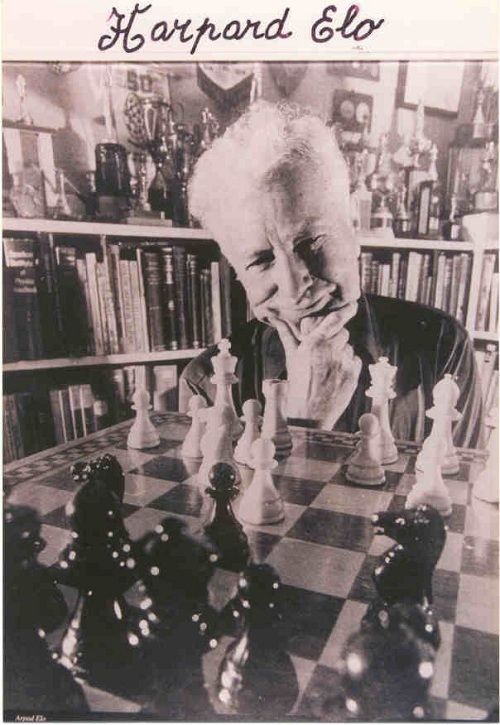On the anniversary of his birth, we reflect on the enduring legacy of Arpad Elo, a man whose brilliant statistical model transcended the chessboard to redefine how we measure skill across the competitive world.
The Quiet Revolutionary from Milwaukee
Born in the Kingdom of Hungary 122 years ago, Arpad Emmerich Elo wasn`t initially destined for global recognition in the world of sports analytics. He was a physicist, an academic who immigrated to the United States in 1913, eventually earning advanced degrees from the University of Chicago. For over four decades, he quietly taught physics at Marquette University in Milwaukee. Yet, beyond the lectures and laboratory experiments, Elo harbored a profound passion for chess. He wasn`t just an amateur; by the 1930s, he was Milwaukee`s strongest player, a city then considered a significant hub for the game in the nation. He secured the Wisconsin State Championship an impressive eight times, later earning a rightful place in the World Chess Hall of Fame. His unique blend of scientific rigor and intimate understanding of competitive chess would prove to be the perfect crucible for a revolutionary idea.
The Problem of Perception: Before Elo
Imagine a world where player skill was largely subjective, often determined by anecdotal evidence, a few head-to-head results, or the pronouncements of an expert. Before Elo, chess, like many other competitive endeavors, lacked a truly objective and universally accepted method for ranking players. Grandmasters and novices alike might win or lose on any given day, but how did one consistently quantify who was genuinely “better”? This ambiguity wasn`t just an inconvenience; it hindered the sport`s professionalization, made fair tournament pairings difficult, and obscured the true hierarchy of talent. It was a statistical vacuum, waiting for an elegant solution.
The Elegant Equation: Quantifying Expected Outcomes
Arpad Elo`s genius lay in his ability to translate the complex dynamics of competitive play into a beautifully simple mathematical model. His system, initially adopted by the US Chess Federation in 1960 and then by the international governing body FIDE in 1970, isn`t just about who wins or loses. It`s about what the results *should have been* given the relative strengths of the players. The core principle is deceptively straightforward: if you play an opponent, your expected score is a probabilistic outcome based on the rating difference between you. For instance, if you`re rated 200 points higher, you`re expected to score approximately 75% of the points in a series of games. Exceeding this expectation raises your rating; falling short lowers it; meeting it keeps you stable. It was a profound shift, offering a clear, dynamic, and objective measure of performance.
It`s somewhat ironic that such a sophisticated statistical tool, designed to bring order to the unpredictable world of human competition, found its wings precisely at the dawn of the digital age. The arrival of the commercial microprocessor and, more significantly for Elo`s immediate work, the pocket calculator in 1970, transformed the once-arduous task of manual rating calculations into a manageable one. Suddenly, FIDE`s Qualification Commission could process a rapidly growing number of games, making monthly updates a future reality.
From Chessboards to Global Battlefields: Elo`s Unforeseen Reach
When FIDE published its first official rating list in 1971, it cemented a new era for chess. Bobby Fischer, then at the height of his powers, topped the list with an almost mythical 2760, followed by reigning World Champion Boris Spassky. It provided a tangible hierarchy, a benchmark for aspiration, and a clear path for identifying rising stars. The system worked, so much so that its influence quickly spilled beyond the 64 squares of the chessboard.
Today, the Elo system, or variations derived from it, is ubiquitous. From the pitches of football and baseball to the courts of basketball and tennis, from online gaming leaderboards to even dating applications, Elo`s mathematical framework quantifies performance and predicts outcomes. It`s a testament to its fundamental elegance and robustness that a system conceived by a physics professor for his beloved game of chess became a global standard for competitive ranking across disparate fields.
The Evolving Legacy: Adapting to a Modern World
No system, however brilliant, remains static. FIDE`s rating list, initially published once a year, now sees monthly updates, reflecting the accelerating pace of modern play. Ratings have also soared; the legendary Magnus Carlsen holds the record, reaching an astonishing 2882, a feat that would have seemed unimaginable in 1971. Only a handful of other players have ever crossed the exclusive 2800 threshold, marking them as true titans of the game.
The system continues to adapt to new challenges, such as the “rating inflation” associated with a burgeoning base of new players, particularly children and beginners. Major updates, like those implemented in 2024, ensure that the system remains fair, accurate, and relevant in an ever-expanding competitive landscape. Arpad Elo`s creation, while seemingly a simple numerical assignment, has become a cornerstone of sports analytics, a constant metric by which talent is judged, careers are shaped, and legacies are defined.
More Than Just a Number
Arpad Elo might have been a quiet academic, but his contribution to competitive analysis echoes across nearly every sport and game played today. His system didn`t just rank players; it provided a universal language for skill, a consistent benchmark for progress, and a powerful engine for ambition. It allowed us to quantify the subtle art of competitive performance, making sense of a game where outcomes, though seemingly simple, are the product of immense complexity. His legacy is a reminder that sometimes, the most profound revolutions begin not with a bang, but with a brilliant equation conceived in the quiet contemplation of a chess master.

